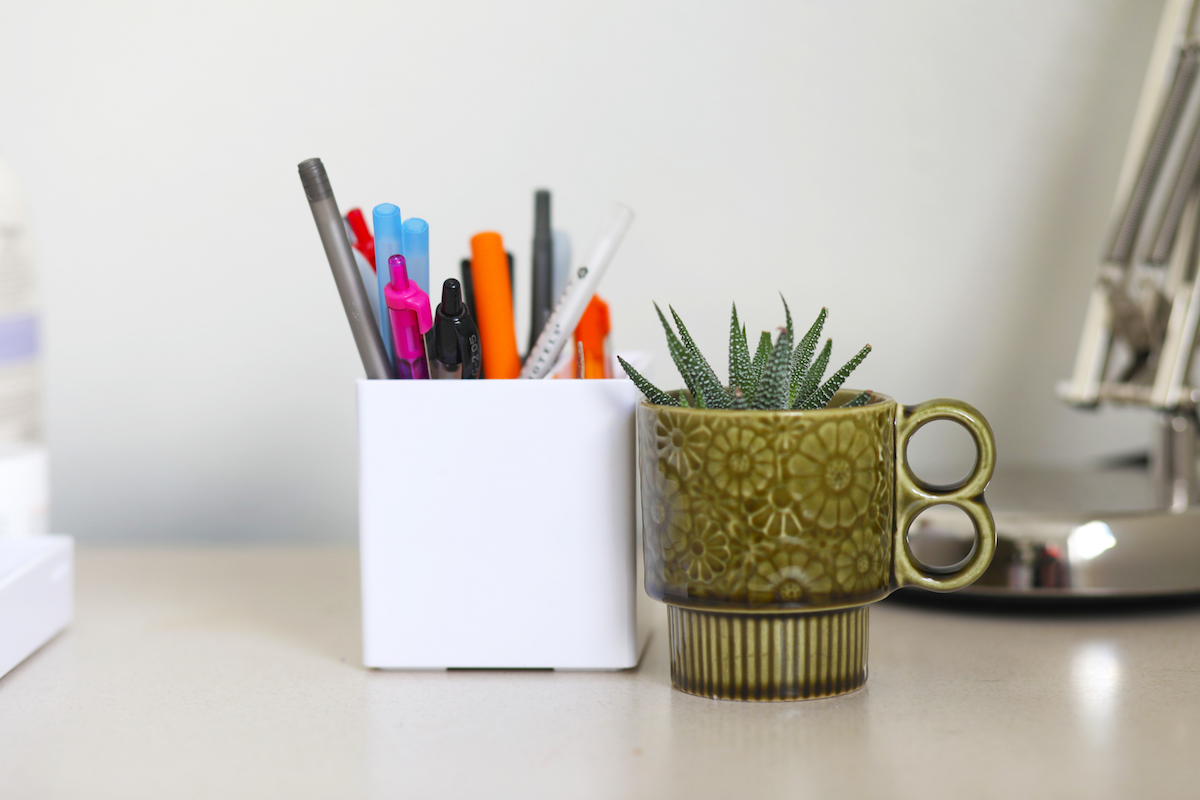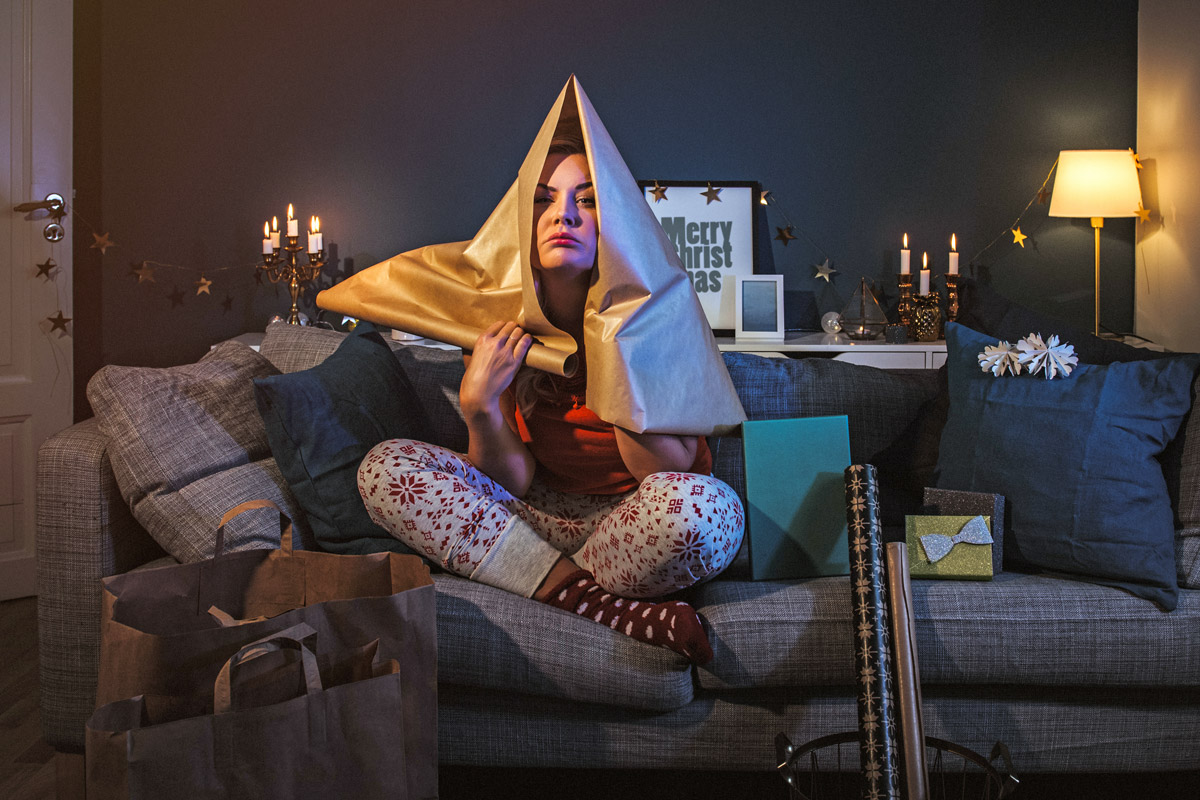How to Add Houseplants to Your Home Decor Without Spending a Fortune

Ever gaze at magazine spreads of gorgeous homes and notice they all have one thing in common?
Whether it’s in Southern Living, Real Simple or Dwell, every house, regardless of style or construction method, has one unifying feature: plants.
It’s easy to see why indoor plants are ubiquitous. They not only add color and style to your space but also pump out oxygen and can have a calming effect on your blood pressure.
But those giant palms and ferns you see in magazines can cost a lot. If you live in a small space or aren’t sure if you have a green thumb, it doesn’t make sense to plop down $50 for a stunning green conversation piece.
You can, however, make moves to work plants into your home decor. Here’s how I incorporated greenery into my small apartment on a serious budget.
Adopt a Houseplant (or Two, or Three, or 25)
For just 11 cents per day, you can support a growing houseplant…
Wait, no, that’s something else.
A lot of people aren’t sure what to do with their houseplants when it’s time to move across the country. Or when they get tired of the cat using it for dental floss. Or when they just can’t bear to look at the greenery their exes gave them.
If you live in a city, you’ll sometimes find houseplants, potted and ready to continue living, sitting quietly on the curb. If this happens to you, do not panic. Give the plant a quick once-over to check for pests before carrying it home and naming it something punny.
If you don’t routinely run across abandoned houseplants in your travels, it’s time to let the internet work for you. Freecycle listservs, local Facebook groups and the “free” section of Craigslist can help you connect with struggling green thumbs in your area.
Hoping to adopt a certain variety of plant? You can request cuttings off a larger plant for you to replant at home. If you’re looking for a cheap way to get started growing herbs at home, this is a great method.
Buy Plant Containers from Thrift Stores

Want to fill your small living space with abundant vegetation? You’re going to need a place to put it.
The variety of planters, pots and hanging baskets at lawn and garden stores may be a great match for your style, but can easily add up to be a terrible match for your wallet. And remember, the bigger the plant, the more expensive the pot.
Instead, head to your local thrift store and spend some time roaming housewares section. You’ll find a variety of containers — meant as planters or otherwise — that will get your creative gardening juices flowing.
Anything can hold a houseplant if you line the bottom with a few pebbles so excess water can drain away from the soil and avoid drowning your plant.
Once you get your thrifted supplies home, give ‘em a good wash to start your gardening efforts on fresh footing.
Dress Up Those Old Planters

Cheap and used planters are not always the cutest. Maybe the color doesn’t jive with your decor, or maybe having multiple plastic pots in terracotta orange is overwhelming.
Please allow me to introduce you to the healing power of spray paint. Grab a glossy color of your choice for $4-$7 and spray away (on a calm day, following a tutorial or two).
It’s a good idea to wear a pair of rubber gloves if it’s your first spray-paint rodeo — a pair of dish gloves works fine if that’s all you have around.
Allow plenty of time for drying before you bring your prettified pots inside and start setting them down all over the house. Don’t ask how I know this. Just trust me.
Step Away from Indoor Plant Stands

If there’s one aspect of indoor gardening that will suck away all your money, it’s plant stands. Small-space or new plant owners don’t exactly want to have potted plants on the floor, but plant stands to elevate modest-sized oxygen-makers can easily cost at least $50.
Even if your surface area is scarce, remember that potted plants make great centerpieces, bedside table accents and bookshelf decorations. You can even group two or three together on a table or next to the TV or on a wide windowsill.
For larger plants that aren’t ready to hang out on the floor, try placing them on a spare kitchen chair or a folding step stool.
Choose Self-Sufficient Plants

Your first foray into indoor foliage shouldn’t be your entry into the nearest metropolitan garden show. Start small and simple with plants that don’t demand daily maintenance. If you want to talk to your plants, that’s cool, but I won’t judge you either way.
Try one of these indoor, hard-to-kill plants recommended by Popular Mechanics and Apartment Therapy. They’re common houseplants and easy to find:
Cactus: Grab any cactus or succulent that catches your eye — there are about a bajillion varieties. Take care in the first few weeks not to overwater, and keep an eye on how your new prickly friend does in various levels of sunlight. It’s hard to kill a cactus, but trust me, it can be done.
Snake Plant (also known as Sansevieria or Mother-in-Law’s Tongue): It’s 99% impossible to kill a snake plant — it’s almost like it enjoys the challenge. These plants love bright light, but also survive just fine in low light. Either way, watering is only a biweekly requirement.
ZZ plant (also known as Zanzibar): This plant needs low light and little water.
Philodendron: This pretty one is great for hanging baskets.
Orchids: They thrive on neglect. One shot-glass of water each week is all it takes to keep them flowering regularly.
Before you make a few selections for your home (or beg your neighborhood listserv for cuttings), make sure your pets will be safe if they try to take a bite.
Splurge on Soil
There’s only one thing you need to buy regularly to take good care of your houseplants: potting soil. It doesn’t need to have growth aids, fancy blends, or “moisture control” to be effective. Spend just $8-$10 on a small bag of plain-old potting soil to have on hand at home.
Every few months, add soil to the tops of your plant containers before you water. The fresh soil will provide a nutrient boost to keep your greenery looking like finery. If you don’t get out of hand buying houseplants on a regular basis (….me), you shouldn’t need more than a small bag or two each year.
Lisa Rowan is a former staff writer at the Penny Hoarder.


















